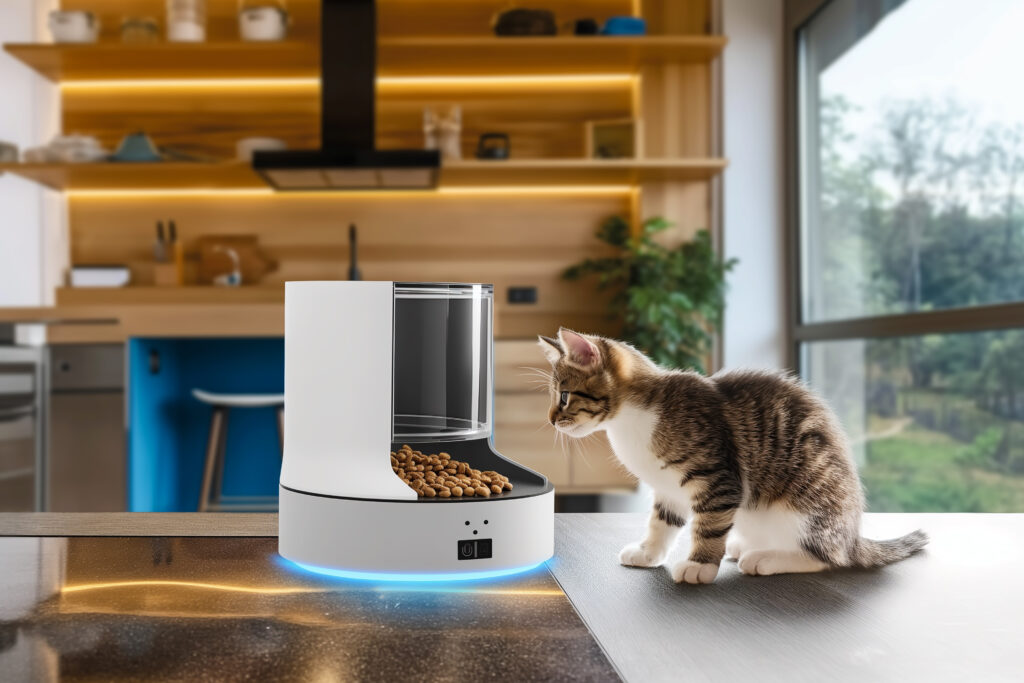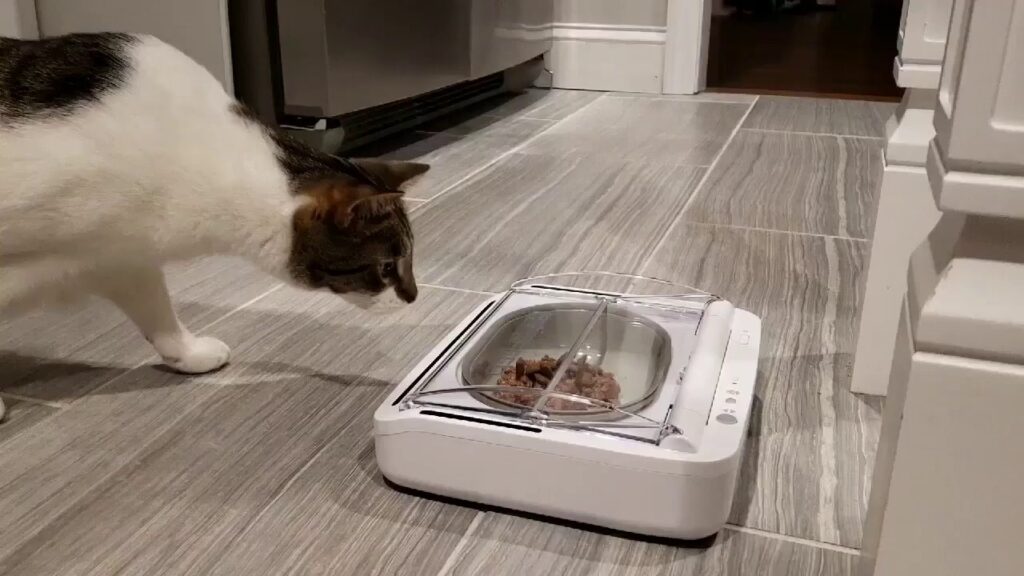Meta Description:
:
Worried about how to store opened canned cat food? Discover practical, vet-friendly tips to keep your feline’s food fresh, safe, and healthy — even after the can is opened.
Introduction: Why Storage Matters More Than You Think
You know that look your cat gives you when it hears the can open? It’s pure excitement! But what happens when they don’t finish it all? It’s tempting to pop a lid on and toss it in the fridge — or worse, leave it out.
How to store opened canned cat food? It’s more important than you think — not just for freshness, but for your cat’s health too. I learned this the hard way when my tabby, Misu, got an upset stomach from leftover food I didn’t store properly. Ever since, I’ve become a bit of a cat food storage nerd. Let me walk you through what works best, without the stress.
Disclosure: This post contains affiliate links. If you buy through them, I may earn a small commission — at no extra cost to you. As an Amazon Associate, I earn from qualifying purchases.
1. Should You Refrigerate Wet Cat Food After Opening?
Absolutely — yes. Opened canned cat food must be stored in the refrigerator. Once exposed to air, moisture, and room temperature, the food starts to spoil. Even premium, preservative-free food can go bad quickly.
💡 Pro Tip:
Store at 40°F (4°C) or below — that’s the ideal canned cat food storage temperature.
Use within 24 to 48 hours max.
2. Real-Life Tip: How I Store Misu’s Leftovers
After dinner, if Misu doesn’t finish her portion, I
- Transfer the leftovers into a air-tight container
- Label it with the date
- Place it in the back of the fridge (not the door — temperature fluctuates there)
Trust me, using the right container makes all the difference. I used to leave it in the can and just slap foil on top. Big mistake — it dried out and smelled… weird.
3. Can I Leave Wet Cat Food Out Overnight?
Short answer? Nope.
Leaving wet cat food out overnight can lead to contamination, bacterial growth, and a bad case of food poisoning — for your feline friend, not you.
“If it’s been more than 4 hours at room temp — toss it,” said my vet. “No matter how good it looks or smells to you.”
4. Best Containers to Store Wet or Dry Cat Food
Here are some of the best containers I’ve used and loved:
| Container Type | Best For | Why It’s Great |
|---|---|---|
| BPA-free plastic tubs | Wet food | Keeps food fresh, easy to clean |
| Glass containers | Wet food | Odor-resistant, eco-friendly |
| Sealed bins (with scoop) | Dry food | Keeps air, moisture, and pests out |
5. Canned Cat Food Storage Temperature
Temperature is key. Warm air + moisture = bacteria.
Keep wet food between 32°F and 40°F once opened. If your house is hot or humid, avoid leaving the bowl out for long.
6. Fridge Storage Tips:
- Use fridge-safe plates or small bowls
- Never store in a half-open can
- Soft-texture food for cats dries out if left uncovered
7. Why This Matters for Your Cat’s Health
Cats are picky eaters — and rightly so. Pet nutrition is delicate. Spoiled food not only tastes bad but can trigger:
- Vomiting or diarrhea
- Refusal to eat
- Food aversion (yes, they remember bad meals!)
So, storing it properly isn’t just about convenience — it’s about care.
Quick Checklist: Things to Remember
✅ Always refrigerate opened wet food
✅ Use an air-tight container
✅ Label the container with the date
✅ Use within 24–48 hours
✅ Don’t leave food in the can
✅ Keep dry cat food in a cool, dry area
✅ Check food labels for storage guidance
Personal Experience: What I’ve Learned Over Time
I used to buy bulk chicken-formula cat food, thinking I was saving money. But without storing it right, I wasted half of it. Now? I use small portions and store smartly, and Misu’s meals are always fresh.
Honestly, once I started treating her food like my own, things changed. I mean, we refrigerate our own leftovers, right? Why not theirs?
Conclusion
So… how to store opened canned cat food? The real answer? With care. Your cat deserves fresh, healthy meals every day. A little effort, like sealing the food properly and keeping it cool — goes a long way.
Your cat can’t say “thank you” out loud. But that happy purr? That’s your reward.
About the Author
Rehana Munir is a passionate cat nutrition blogger who has been writing articles on cat health and nutrition for the past year. Her mission is to provide cat lovers with trusted, natural, and easy solutions. Rehana has created the website “Cat Food Mate,” which is becoming well-known for its focus on cat food and nutrition. Her work is based on research and scientific sources to ensure readers get the best information.
Reviewed and Verified
This article is carefully researched and prepared, including only authentic and reliable information. We strive to ensure every article is based on the latest scientific data and expert recommendations. If you have any questions or feedback, feel free to contact us through If you have any questions or feedback, feel free to contact us through the website.
FAQ
Q1: Can I give my cat wet food if I left it open overnight?
Not a good idea. Even if it doesn’t smell bad, bacteria can still be present. Your cat might vomit or suffer from an upset stomach.
Q2: What happens if I forget to refrigerate wet cat food?
It spoils — plain and simple. Exposure to air and room temperature creates a breeding ground for bacteria.
Q3: Best container to store dry cat food?
Go for a sealed plastic or metal container. The original food bag is often lined for freshness, so if you keep it, roll it tightly and clip it.

